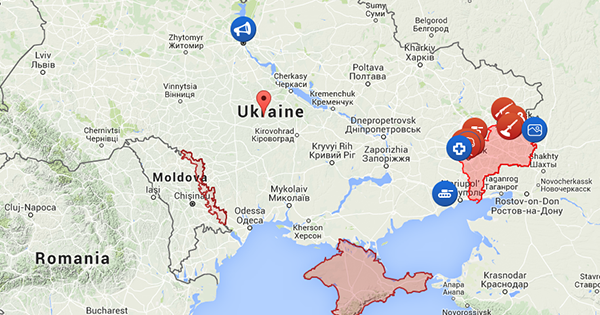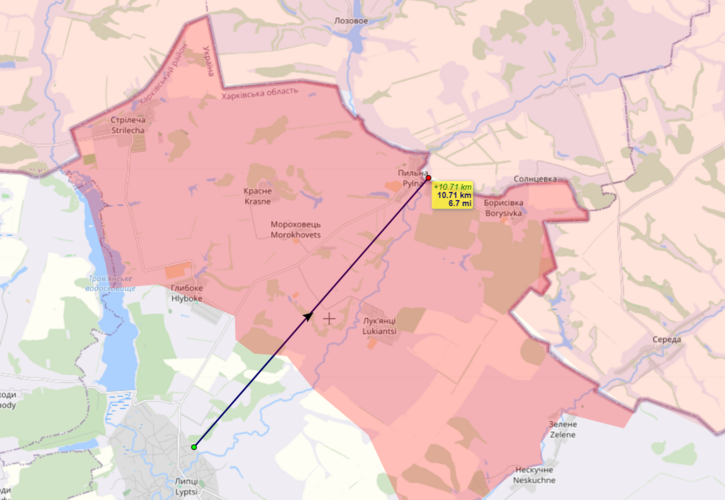Scott Kenny
ACCESS: Above Top Secret
- Joined
- 15 May 2023
- Messages
- 7,363
- Reaction score
- 6,930
I'm going to say emergency jettison.Poor quality control, jamming, emergency jettison of bombs?
I'm going to say emergency jettison.Poor quality control, jamming, emergency jettison of bombs?

Bit of a nuisance for anyone who happens to be driving along in a car though.Emergency jettison doesn´t arm the bomb. Given the soft ground nature of the impact location (see photo above) and the crater shape that suggest a vertical trajectory at impact, we can guess this bomb was released during a toss bombing maneuver. Those are highly inaccurate with unguided ordonnance and only depends on the pilot professionalism.
It is of no surprise that some bombs end-up on Russian territory like this.
Very small crater size, though.Emergency jettison doesn´t arm the bomb. Given the soft ground nature of the impact location (see photo above) and the crater shape that suggest a vertical trajectory at impact, we can guess this bomb was released during a toss bombing maneuver. Those are highly inaccurate with unguided ordonnance and only depends on the pilot professionalism.
It is of no surprise that some bombs end-up on Russian territory like this.

Not sure if this was posted to this thread or not; do not think I’ve seen it. Boeing has a 7.5 billion dollar contract for JDAM kits extending to Feb 2030. It is not clear how many kits that buys, but even accounting for training, repairs, etc and several hundred million dollars of foreign sales, it is hard to imagine that this isn’t a multi year buy approaching or exceedingly 100,000 units. Previous kits cost between 25,000-75,000 depending on the size of the buy and the sophistication of the kit. Presumably these kits will involve jam resistant receivers which might increase price, though the scale of the buy would tend to push unit cost down.
Any chance powered JDAM is part of this?
Also a six year production run of this size must be building out more than 10k units per year, on average.

Boeing wins $7.5 billion contract from US Air Force for guided bombs
The multi-billion dollar contract for Joint Direct Attack Munitions comes at a time when the military is trying to boost production of multiple weapons.www.defensenews.com
Bear in mind that this is an IDIQ contract, so the quoted contract value is the maximum that can be spent on it, not an actual commitment to spend that much money.
Thanks, I had not noticed that nor am I familiar with the process. Due such contracts have any kind of minimum amount?
An IDIQ (indefinite delivery, indefinite quantity) contract is basically a price list/offer sheet from the vendor that has been approved by the government. Once an IDIQ is in place, the government can order off that list whatever it wants and can fund. There are usually minimum guarantee amounts associated with an IDIQ award, which should be the amount that the government is sure to order. The cap is the outer bounds of what the government might order if all its most optimistic plans are funded.
Is there any way to determine what the likely floor is for the contract cost?
Fiscal 2022, 2023, and 2024 procurement funds; operation and maintenance funds; research, development, test, and evaluation funds; Navy funds; and Foreign Military Sales funds in the amount of $228,196,923, are being obligated at time of award.

Indeed, Israel is already doing something very similar with the Rampage.With the need for large amounts of precision weapons and interceptors, it seems a good solution would be to share some production lines between the branches. We see that with Lockheed pushing their PAC-3 for the Navy, Russia looking like they are using 300mm rockets on their jets, and a different thread talking about air launched ATACMS or PRsM.
Could there be a case for using the GMLRS standard or -ER as a base for a cheaper air launch missile? Lockheed is trying to hit 14,000 per year in 2025 up from 6,000 - so unit prices are set to fall with the production increase. USAF buying say 2,000 per year gets to take advantage of a large production set to get volume quickly and low prices.


There are a couple types of US glide bombs that made it to operational use, though I think only with SOCOM. GBU-69. Viper strike.
Everyone has had a go...There are a couple types of US glide bombs that made it to operational use, though I think only with SOCOM. GBU-69. Viper strike.
DIU, USAF Pick Four Companies To Develop Low-Cost Cruise Missile | Aviation Week Network
DIU announced June 3 that it has awarded contracts to Anduril, Integrated Solutions for Systems Inc., Leidos Dynetics and Zone 5 Technologies.aviationweek.com
The majority of those never entered service.
Thats really my point. And the ones that did entered 'limited service' (US SOCOM 'limited' service is most nations full munitions buy....).
Is the Turkish MAM-C the most successful?



Most likely, but it's only really made possible by the fact that Ukraine isn't allowed to fire western SAMs over the border... yet, which allows them to fly right up to the border to drop them.A 3000kg glide bomb?!? frack!
So, Tu22s, Bears, and the other big bombers?
Real facts telling the opposite. But still, UMPKs are flying.the fact that Ukraine isn't allowed to fire western SAMs over the border...
Real facts are shown on liveuamap. The glide bombs are coming exclusively from the Belgorod sector, with Russian aircraft dropping them from the RU side of the border into the Kharkiv area (Liptsy, in this case, is a border town, see below). They have been tried in various other places at times, but only with accompanying RU aircraft losses. The whole purpose of the Kharkiv offensive was to capitalise on the extremely limiting RoEs imposed on Ukraine by effectively base-camping. They can't do that with artillery any more due to RoE changes, but they can still do it with aircraft. I see that changing very shortly though after these FAB-3000 videos circulate some.Real facts telling the opposite. But still, UMPKs are flying.


No, and Ukraine was reprimanded for the IL-76 shootdown using a German Patriot, they were actually told of for shooting down a military aircraft of the country attacking them. The first link talks about Russia shooting down their own planes, which is nice but not relevant. In other areas along the front several Su-34s have been lost while glide-bombing. The only reason Russia even still has planes is the RoEs c0ck-blocking targeting inside Russia.
This doesn't change the fact of shot down.No, and Ukraine was reprimanded for the IL-76 shootdown using a German Patriot
And you believe this version?! Four aircraft, including fighter-jets and helicopters flying in our own airspace in different directions, with different speeds at different altitudes were shot down by our own RuAD just in two minutes?!The first link talks about Russia shooting down their own planes, which is nice but not relevant.

 www.forbes.com
www.forbes.com
